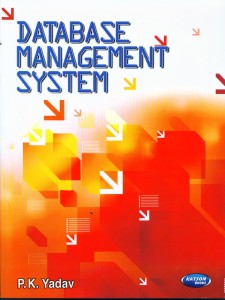510
 A Database Management System (DBMS) is described as a set of computer programs that manages the creation, maintenance, and administration of a database. It is a system software package that supports the use of unified collection of data records and files known as databases. A DBMS could utilize any of a variety of database models, such as the network model or relational model.
A Database Management System (DBMS) is described as a set of computer programs that manages the creation, maintenance, and administration of a database. It is a system software package that supports the use of unified collection of data records and files known as databases. A DBMS could utilize any of a variety of database models, such as the network model or relational model.
MySQL
- MySQL is a central component of the widely used LAMP (Linux, Apache, MySQL, Perl/PHP/Python) web application software stack. It is a common choice of database in web applications and is used in many well-known websites, including Google, Facebook, Wikipedia and YouTube.
- In addition, free software projects that need a full-featured database management system often use MySQL. The main features of MySQL include SSL support, query caching, embedded database library, True Varchar support, updatable views, and more.
- It also provides features that other RDBMS systems may not, such as multiple storage engines (native, partner-developed, and community-developed storage engines) and commit grouping
Apache Derby
- Apache Derby is an open source relational database management system (RDBMS) that is based on Java, JDBC, and SQL standards. The project’s main aim is to provide a data management system that is easy to install, deploy, and use.
- Apache Derby has a 2.6 MB disk-space footprint, which contains the base engine and embedded JDBC driver. And since it provides an embedded JDBC driver, you could easily place it in any Java-based solution.
- Apache Derby supports the more standard client/server mode with the Derby Network Client JDBC driver and Derby Network Server. The network server maximizes the reach of the Derby database engine by allowing traditional client server operation. It also allows clients to connect over TCP/IP using the standard DRDA protocol and enables the Derby engine to support networked JDBC, ODBC/CLI, Perl and PHP
PostgreSQL
- PostgreSQL (also known as Postgres) is a free and open source object-relational database management system (ORDBMS) that has evolved from the Ingres project. PostgreSQL has native programming interfaces for C/C++, Java, .Net, Perl, Python, Ruby, Tcl, ODBC, among others.
- such as Multi-Version Concurrency Control (MVCC), point in time recovery, tablespaces, asynchronous replication, nested transactions (savepoints), online/hot backups, a sophisticated query planner/optimizer, and write ahead logging for fault tolerance. It also supports international character sets, multibyte character encodings, Unicode, and it is locale-aware for sorting, case-sensitivity, and formatting.
HSQLDB
- HSQLDB (Hyper Structured Query Language Database) is a relational database management system that supports a huge subset of SQL-92 and SQL:2008 standards. It provides a small but fast database engine that provides both in-memory and disk-based tables.
- HSQLDB offers tools such as a minimal web server, command line and GUI management tools, and several demonstration examples. It can run on Java runtimes from version 1.1 and above, including free Java runtimes like Kaffe. Some of the high-level features of HSQLDB include user-defined SQL procedures and functions, updatable views, arrays, schemas, datetime intervals, lobs, full and lateral joins and set operations.
Ingres
- Ingres is an SQL relational database management system that is aimed to support massive enterprise and government applications. Although commercially supported, it is fully open source with an ever-increasing global community of contributors.
- Some of the main features of Ingres include fully transactional DBMS, ACID, and unlimited database and table size.